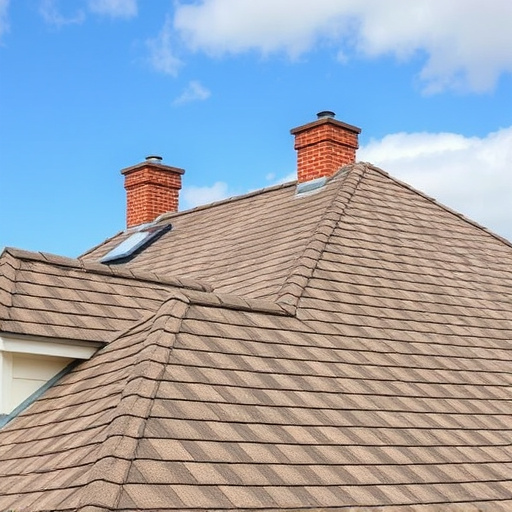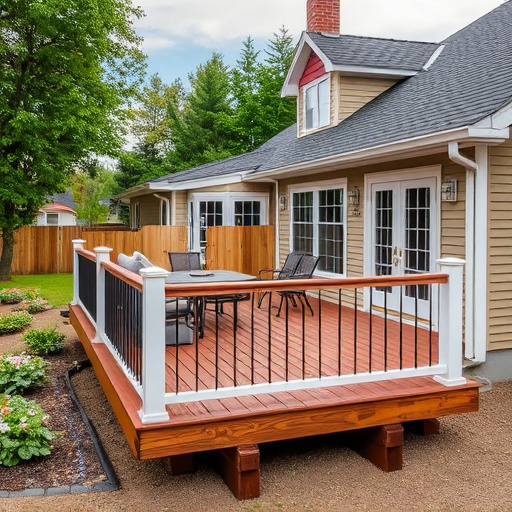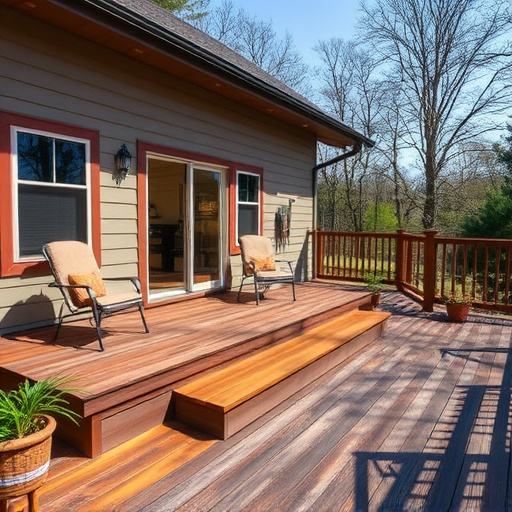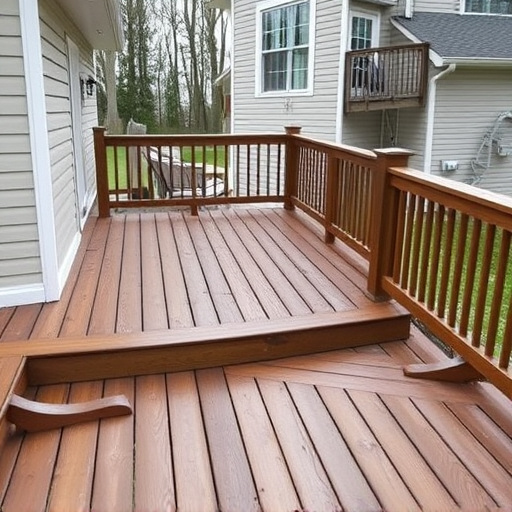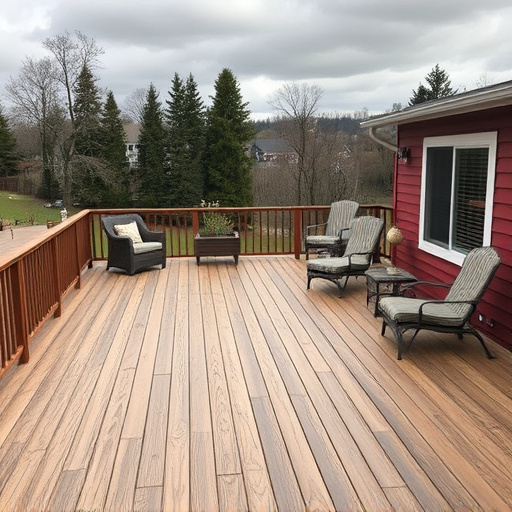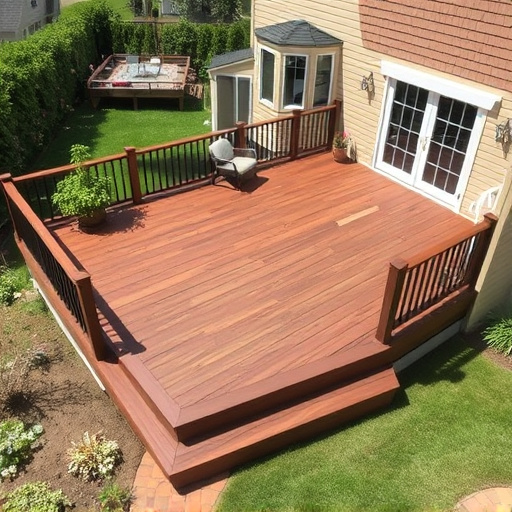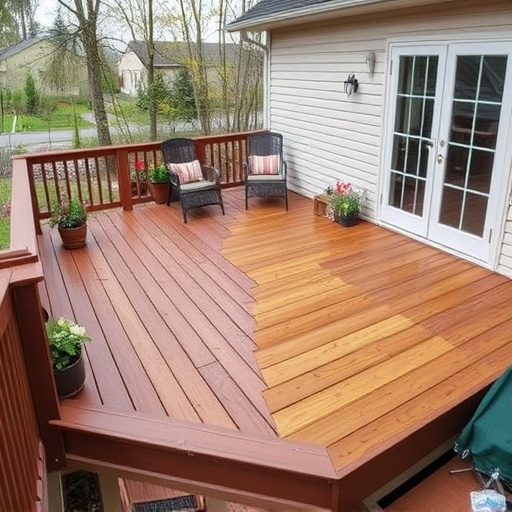When choosing a deck railing system, consider both functionality and aesthetics. Material costs vary greatly, affecting long-term expenses for repairs or replacements. Budget-conscious homeowners have affordable options like pressure-treated wood, composite decking, and metal railing systems without sacrificing safety or style. DIY installation methods, planning, reusing parts, and regular maintenance can save money and prolong the lifespan of your deck railing.
Looking to enhance your outdoor living space on a budget? Upgrading your deck with a new railing is both practical and aesthetically pleasing. This guide explores cost-effective deck railing options, from materials to installation tips, ensuring safety without breaking the bank. Discover how to navigate the world of deck railings, understanding basic concepts and costs first. Then, delve into affordable materials and designs tailored for budget-conscious homeowners.
- Understanding Deck Railing Basics and Costs
- Budget-Friendly Materials and Designs
- Installation Tips for Savings and Safety
Understanding Deck Railing Basics and Costs
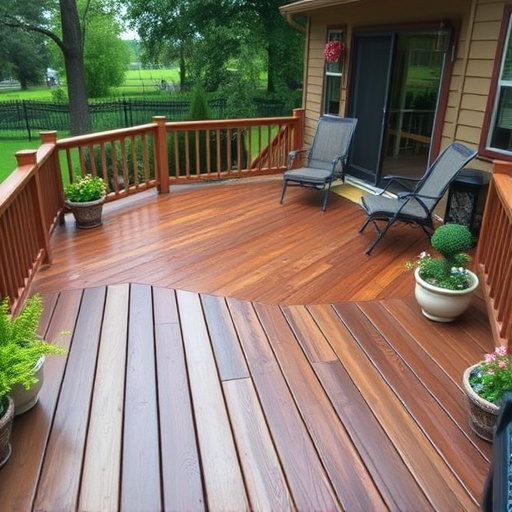
When considering deck railing options for your home, understanding the basics is key. Deck railings serve both functional and aesthetic purposes, providing safety and defining your outdoor space. The cost of a deck railing system varies widely based on materials used, complexity of installation, and local labor rates. Common materials range from wood to aluminum and vinyl, each with its own price point and maintenance requirements.
While budget-conscious homeowners may opt for more affordable materials, it’s essential to factor in long-term costs. Inexpensive railings might require frequent repairs or replacements due to wear and tear, especially in areas prone to storm damage. Reliable home service solutions often highlight the importance of investing in durable materials and quality installation to avoid costly siding and gutters replacements down the line.
Budget-Friendly Materials and Designs
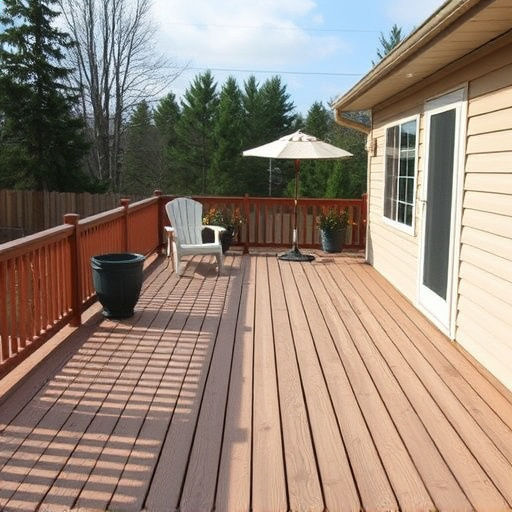
When it comes to deck railing options for budget-conscious homeowners, there are numerous cost-effective materials and designs available that don’t compromise on safety or style. One popular choice is pressure-treated wood, which offers durability at a relatively low cost. This material is resistant to rot and decay, making it a long-lasting option for outdoor projects. Wood railings can be stained or painted to match your home’s exterior, providing a classic and natural look.
For those seeking an even more affordable solution, composite decking materials are worth considering. These materials mimic the appearance of wood but are made from a mix of plastic and wood fibers, offering superior resistance to rot, mold, and insect damage. Composite railings require minimal maintenance, making them an excellent choice for busy homeowners. Additionally, modern metal railing systems provide both strength and versatility in terms of design, often featuring elegant lines and various styles that can complement both traditional and contemporary deck designs, all while remaining budget-friendly when compared to other options, such as roof consulting, storm damage repair, or roofing and siding replacements.
Installation Tips for Savings and Safety
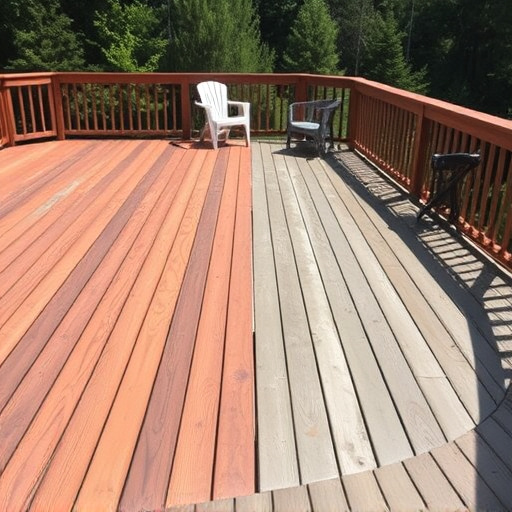
When installing a deck railing, budget-conscious homeowners can save money and ensure safety by following a few simple tips. First, consider DIY installation if your skills allow; this can significantly reduce labor costs. Online tutorials and guides are readily available for popular deck railing types, like cable rail or wooden balusters. Second, opt for materials that align with your budget without compromising safety standards. Treated wood or composite materials offer durability at a lower cost compared to metal or glass.
Moreover, planning is key to staying within budget. Measure your deck’s perimeter accurately and purchase railings accordingly. For existing decks, you might save on material costs by reusing parts of the old railing system if they’re in good condition. Lastly, don’t overlook safety features. Ensure the railing height meets local building codes and includes proper handrails for stability. Regular maintenance, such as siding repairs or replacement, can also extend the life of your deck railing, preventing future expenses.
When considering a budget-friendly deck railing, it’s essential to balance aesthetics, safety, and cost-effectiveness. By understanding the basics, exploring affordable materials like aluminum or composite wood, and applying thoughtful installation techniques, homeowners can enhance their outdoor spaces without breaking the bank. Remember, an attractive and secure deck railing is within reach for any homeowner willing to invest a little time and effort into their project.







